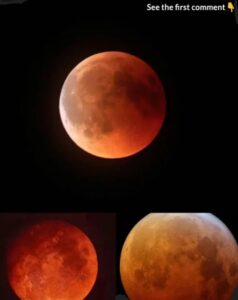Rare Sky Event: Moon to Cover the Famous Seven Sisters Star Cluster

Sky watchers are in for a special cosmic performance. In addition to the stunning Perseid meteor shower—produced by Comet 109P/Swift-Tuttle—another rare celestial event is capturing attention: a lunar occultation of the Pleiades star cluster, visible to over half the planet’s population.
While dazzling meteor showers and lunar eclipses often steal the spotlight, the Moon offers other intriguing shows for those who take the time to look. One of these lesser-known but magical moments is set to unfold this month: a temporary vanishing act involving the Moon and a beloved group of stars called the Seven Sisters.
On July 20, skywatchers across the United States and Canada will witness a remarkable sight as the thin waning crescent Moon drifts directly in front of the Pleiades cluster, momentarily hiding these stars from view.
Often referred to as M45 in astronomical terms, the Pleiades is a well-known open star cluster. As described by NASA, the cluster consists of over a thousand stars, although only a handful shine bright enough to be seen without telescopes. The group lies approximately 445 light-years away in the Taurus constellation and has been known since ancient times—so ancient, in fact, that it lacks an official discoverer.
However, famed Italian astronomer Galileo Galilei was the first to document the Pleiades through a telescope. What’s most fascinating is that despite being nicknamed the “Seven Sisters,” only six stars are easily visible to the naked eye. Cultures across the world have myths explaining the missing seventh sister, with some scientific speculation suggesting that the seventh star may have once been visible in the past but is now hidden due to its proximity to another bright star.
This upcoming occultation isn’t a once-in-a-lifetime event—but it’s still mesmerizing. According to timeanddate.com, the Moon has been crossing paths with the Pleiades monthly since September 2023, and this will continue until July 2029.
Astronomer Anna Gammon-Ross from the Royal Greenwich Observatory explained to Discover Magazine that the Moon completes an orbit every 27.3 days, so its position relative to background stars constantly shifts. “Depending on the Moon’s altitude at the time, it may pass above, below, or right in front of the Pleiades,” she said. On July 20, lucky observers will get the full show as the Moon passes directly over the star cluster.